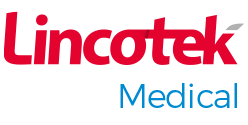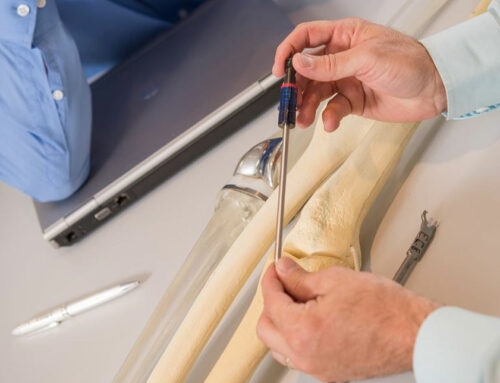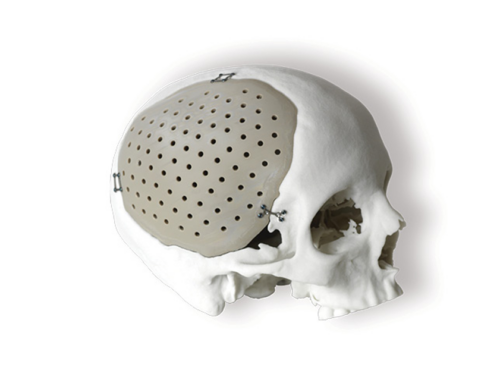BONEZONE | DECEMBER 2, 2022. Orthopedic companies understand the importance of investing in R&D to grow and evolve. The five suppliers featured below help OEMs design and manufacture new products to keep pace with the competition. They tap into data analytics, business intelligence tools and streamlined strategies to minimize the costs of device development, maintain operational efficiencies and ensure products reach the market without delays that stall innovation.
This is the third part of a three-part series about how companies throughout the supply chain are helping companies find opportunities to improve how devices are created, produced and launched. Part one covers proficiency and efficiency gains in manufacturing and part two focuses on materials science.
Considering Sterilization of Orthopedic Devices with X-ray
STERIS with Senior Radiation Sterilization Manager, Applied Sterilization Technologies Betty Howard
Implantable orthopedic devices have an extensive history with radiation sterilization processes, specifically gamma irradiation. X-ray is a viable alternative to gamma processing, ensuring long-term processing capacity while providing the same level of product assurance.
The pandemic has taught all industries, including healthcare and medical device, of the urgency for predicting the needs for services and materials as early as possible. This allows for the successful navigation of adverse events and ensures the future continuity of critical products.
X-ray irradiation is essential in ensuring the final sterile product reaches patients without delay, providing sustainable alternatives to other terminal sterilization processes, and supporting volume growth over time with the same level of assurance as other irradiation technologies. X-ray can grow with manufacturers’ needs and prevent disruptions in the availability of sterile products.
Developing Relevant Test Strategies to Overcome Device Development Hurdles
Element Materials Technology with Technical Director Lisa Ferrara, Ph.D.
Companies face myriad challenges today, but supply chain delays are at the forefront and continue to impact the product life cycle of medical devices. The initial delays often start with raw material deliverables that are needed for the fabrication of a medical device system. When these hold-ups occur early in the supply chain, device manufacturers face additional interruptions along the chain and can even face delay to market.
Use of multiple suppliers for specific resources or services have increased to help offset today’s supply chain challenges. This method can provide a parallel pathway for accessing the necessary resources to meet product development deadlines. However, it is essential to ensure the processes and end products provided by the multiple suppliers will respond in an equivalent fashion and not result in varied performance outcomes for the final medical device. This directly impacts the testing and regulatory phases of device development.
Conducting independent assessments to ensure the end products from multiple suppliers are comparable is a necessary step in the evaluation of medical devices to ensure safety and consistency between suppliers. The added cost and time to run these additional confirmatory assessments can be burdensome, but it is essential prior to entering the full test battery of the final product that is required for a regulatory submission.
Failure to do so could result in further delay getting the product to market. Having well-defined process validations, test strategies and pathways related to the evaluation of device performance and integrity can potentially offset the long-term effects of early supply chain delays and enhance regulatory success.
Using Data Analytics and Project Management to Reduce Lead Times and Ensure Successful Product Launches
Lowell with Vice President of Sales and Marketing Philip Allen
Access to information and raw data has never been easier and the amount of big data flowing through your organization is increasing. Capturing and displaying this data in a way that’s easy to understand can help project managers make faster and better decisions and increase your organization’s project success rate. Business intelligence tools can transform large data sets into actionable dashboards for project managers, enabling faster and better decision-making.
We’re at a time when medical device manufacturers and OEMs have access to a large volume of data, and it’s not feasible to manually comb through the information to get the insights we need to deliver results. Business intelligence tools help us automate how we look at data to get better visibility into our processes and make better decisions for our customers. This is true for project management, as well as our business as whole.
As a contract manufacturer, our customers are very focused on lead times. Our use of business intelligence tools and data analytics has allowed us to track what’s happening on the floor more easily, accurately and reliably. We’re able to measure efforts that were traditionally hard to measure. We can look at historical project data to help plan new projects. All of this allows us to be better partners for our customers.
Business intelligence tools help you unlock insights into data you likely already have. They can help you drive better results by clearly showing what’s happening in your manufacturing processes. We’ve found it’s about having the right tools, knowledge and discipline to use the data correctly and drive results for your partners and business.
Maximizing Development Time to Market
Lincotek Medical with Director of Commercial Product Development Brandon Miller
Product development can be more art than science for small OEMs, which do not have internal resources for all aspects of a product’s life. Medical device development can also be lengthy and financially burdensome. We believe an efficient method is critical to minimize costs and time to market. Failure to properly navigate the process and understand regulatory requirements can lead to gross timeline and budget expansion, and may ultimately lead to project failure.
Our team provides an integrated experience for medical device development of instruments and implants across all disciplines through a robust QMS, regulatory services, dedicated prototyping, testing with an on-site cadaver lab, design transfer and full-scale manufacturing. These key functions within the company are essential to an efficient product development process and set us apart from other development service providers.
Why is it important now more than ever? Everything has increased in price, including raw materials, labor and shipping. Secondly, technology capabilities are at a point of expansion. Additive machines, automation and new material science breakthroughs are improving the way we can approach and solve market concerns with our customers. Many of our customers acknowledge the capabilities of our company based on only the services they currently use. I would encourage them to evaluate their vendors’ capabilities to fully leverage these relationships and maximize the potential of utilizing the vendor for more than one product or service.
Solving the Inventory Problem in Orthopedics
SITES Medical and Mach Medical with Marketing and Business Development Leader David Anderson
For decades, the orthopedic industry has been trying to reduce the cost of inventory (estimated to be 8% of revenues) through better forecasting and management. Now there is a way to reduce that cost by 75% or more. The solution involves a suite of technologies that enable the cost-effective manufacturing of a set of implants that are size-specific to the patient and delivered within the surgery scheduling window. This approach benefits all stakeholders: The surgeon and care facility gain efficiency through reduced inventory management and needed storage space; the OEM can reduce the amount and cost of inventory placed in the field; and their sales representatives can reduce the time spent on non-productive logistics tasks.
Over the last several years, there has been a shift in elective orthopedic procedures from the inpatient to the outpatient setting, where reimbursement is lower and there is a premium on lower cost and peri-operative efficiency to ensure profitability. OEMs are under pressure today to respond to these needs, and cost-effective manufacturing capabilities can reduce expense and logistical burden in ways that no others can.
While the biggest inventory reduction opportunity exists when we make a set of implants (standard line or custom) based on the preoperative plan, which requires a surgeon or physician assistant to template and determine the implant size, there is an opportunity to reduce inventory by as much as 55% through our three-week lead times and flexible lot size without requiring templating or changing the OEM business model. With such short lead times, OEMs don’t need to maintain high buffer inventories to ensure product availability at the time of surgery, and flexible lot sizes ensure that only the needed inventory gets built. This new approach represents low-hanging fruit as far as cost-reduction opportunities are concerned.






